Over the last couple of years, airlines have been cracking down on luggage and the limits. I’ve reached a point where airlines have pulled out tape measures to measure my backpacks and carry-on suitcases. In fact, there was a time, a traveler with me was told to check in a backpack because it exceeded specifications.
Regulations
This lead me down a rabbit hole to figure out exactly what is allowed…or not allowed. It can be frustrating to arrive at the airport to be told you have to check in what you thought was allowed as a carry-on. After a few hours of research, I ended up getting a Pelican and Nanuk case. In terms of size, there seem to be two thoughts for sizes. The first one is 22” x 14” x9” and the other is 24” x 16” x 10” with maximum weights not specified or somewhere between 25 and 35 pounds.
Shopping
Most of the airlines are closer to the 22” x 14” x 9” carry-on size so I decided to stick with that to see what options are out there. I was able to find many “official carry-on luggage” that exceeded most airlines. Some of the problems I found when shopping for carry-on luggage were:
- Not showing the measurements
- Showing measurements without the wheels
- Only showing the internal measurements
Another part of my search lead me to the following criteria:
- Hardcase shell because I carry laptops
- Maximum external measurements that match 22” x 14” x 9”
- 2 wheels
With the criteria, most of my searches always ended up with the Pelican 1535 case. I did more searches, “Pelican alternative cases”. This lead me to the Nanuk cases. After another search for “Nanuk alternative cases”, I found Seahorse cases.
Choosing Pelican, Nanuk, or Seahorse
After 24 hours of watching YouTube videos and reading reviews, I decided on the Pelican and the Nanuk. These two brands came with certifications such as coldest temp, hottest temp, air/water protection, and how much pressure it would take to break them. You can see all of their notes online but it really came down to size and some kind of hard-shell since most of the certifications say these things are indestructible.
Here are the specs:
Pelican 1535 |
Nanuk 935 |
|
| Interior | 20.4″ × 11.2″ × 7.2″ (51.8 x 28.4 x 18.3 cm) |
20.5″ × 11.3″ × 7.5″ (52.1 x 28.7 x 19.1 cm) |
| Exterior | 21.96″ x 13.97″ x 8.98″ (55.8 x 35.5 x 22.8 cm) |
22″ × 14″ × 9″ (55.9 x 35.6 x 22.9 cm) |
| Lid Depth | 2.00″ (5.1 cm) | 2.1″ (5.3 cm) |
| Bottom Depth | 5.21″ (13.2 cm) | 5.4″ (13.7) cm |
| Total Depth | 7.21″ (18.3 cm) | 7.5″ (19.09 cm) |
| Volume | 0.95 ft³ (0.027 m³) | 1.00 ft³ (0.028 m³) |
| Weight | 10.35 lbs (4.7 kg) | 11.6 lb (5.2 kg) |
| Wheels | Quiet Rolling Stainless-Steel Bearing Wheels | Polycarbonate Wheels Molded with Polyurethane |
| Handle Height from Ground | 38″ | 32″ and 38″ |
| Padlock Hole Diameter | 5/16″ (8 mm) | 0.340″ (8.83 mm) |
| Max Buoyancy | 64.8 lbs (29.4 kg) ? | 58 lb (26.4 kg) |
| Body Material | Proprietary Polypropylene Blend | NK-7 High Impact Polypropylene |
| Latch Material | ABS | Nylon 66 |
| O-Ring Material | EPDM | EPDM |
| Purge Body Material | ABS | Nylon 66 |
| Purge Vent Material | Hi-Flow Gore-Tex 3 Micron Hydrophobic Non-Woven | Gore Membrane Silicone Washers |
| Minimum Temperature | -60° F (-51 ° C) | -20°F (-29°C ) |
| Maximum Temperature | 160° F (71 ° C) | 140°F (60°C) |
Findings
The initial findings were:
- The external measurements match and they seem like a great carry on
- The Pelican case is lighter
- The Nanuk has a great extendable handle and can vary in height while the Pelican was fixed at one height
Digging Deeper
Instead of using a ruler, I decided to try to pack using real-life objects. The main object was a 17” Dell laptop. Via paper, the Nanuk, claims to have more interior space but as you can see from the pictures, the laptop could not lay flat. While in the Pelican, it is able to lay flat.
The other things I noticed were things in the Nanuk where the handle track took some room in the inside and the space carved out for the wheels and handle were bigger than the Pelican.
This leads me to my next test: volume. I did not trust the internal measurements that were on paper. Instead of doing the math to figure out volume, I decided to fill the bottom portion of the Nanuk with water and pour the contents into the Pelican. I was shocked by the findings. There was more space in the Pelican to fill!
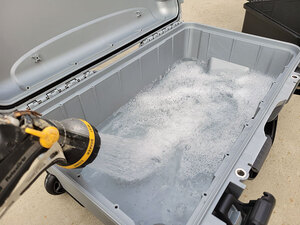
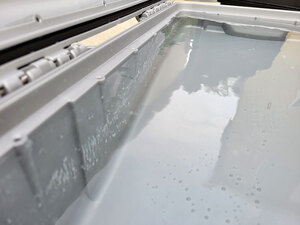

The wheels on both work great.
My biggest problem with the Pelican is the handle and how to dislodge/lock it into place. The Nanuk wins in terms of the handle because it has an adjustable height and a push-button release versus the Pelican’s manual latch.
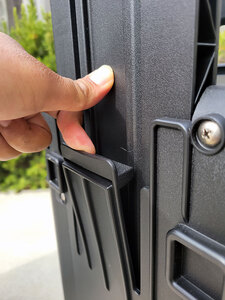
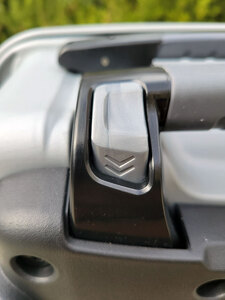
Conclusion
Do not trust the specifications listed!
Out of the two, I will probably buy another Pelican because of the volume capacity and how light it is.
Take a look at the differences between the Pelican and the Nanuk.


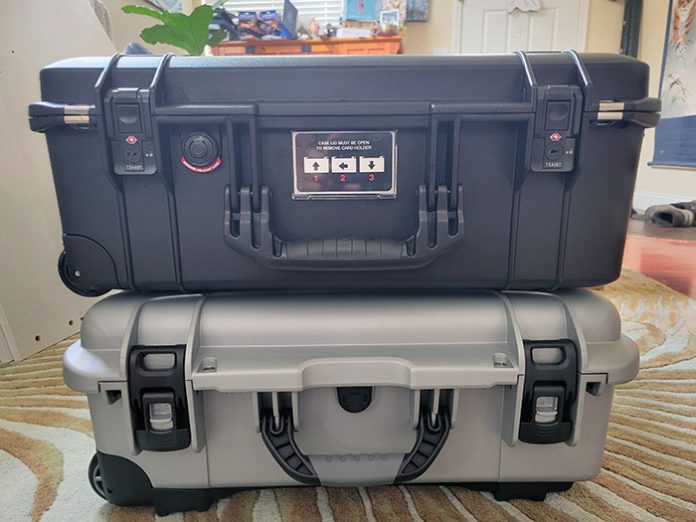


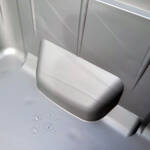
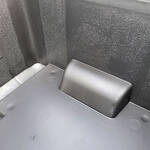
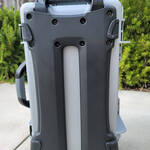
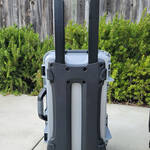
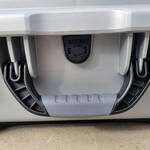
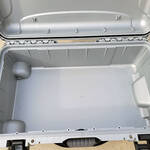
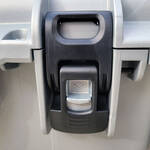
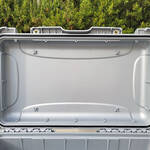
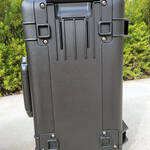
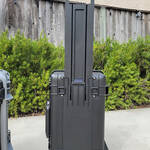
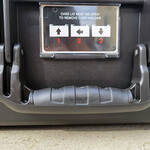
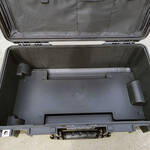
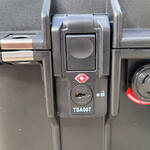
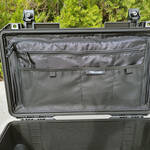


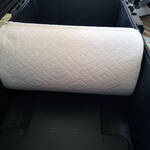


Thanks for the thorough review of these 2 carry on bags, now its easier to make a purchase decision.
You’re welcome! Glad it helped.